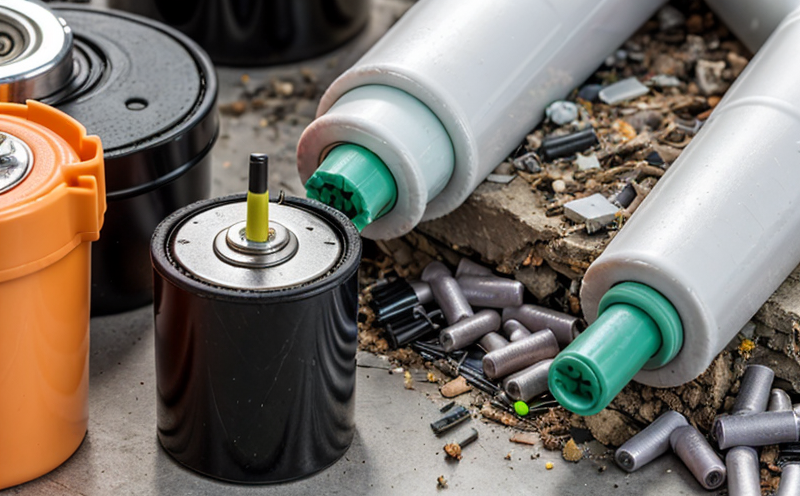IEEE 1881 Recycling Testing of Stationary Energy Storage Batteries
The IEEE Standard for Recycling Testing of Stationary Energy Storage Batteries (IEEE 1881) provides a comprehensive framework that ensures the safe and efficient recycling of large-scale stationary energy storage systems. These batteries are critical components in renewable energy infrastructure, grid stabilization, and other applications where reliable power supply is essential. The standard aims to promote environmental sustainability by ensuring proper handling of end-of-life batteries.
Stationary energy storage batteries often contain hazardous materials such as lead, lithium, nickel, cobalt, and others. Proper recycling not only minimizes environmental impact but also recovers valuable resources for reuse in manufacturing new batteries. The IEEE 1881 standard addresses the chemical, electrical, mechanical, and thermal properties of these batteries to ensure they can be recycled safely without compromising public safety or environmental integrity.
The testing process under IEEE 1881 involves several critical steps aimed at evaluating the battery's compatibility with recycling processes. These include:
- Evaluating the battery’s chemical composition
- Assessing mechanical integrity and structural stability
- Making electrical tests to determine conductivity, internal resistance, and other parameters
- Performing thermal testing to ensure safe handling during recycling processes
- Evaluating recyclability potential by examining the presence of toxic metals
By adhering to IEEE 1881 standards, laboratories can provide reliable data that helps manufacturers make informed decisions about battery design and end-of-life management. This ensures compliance with international regulations on hazardous waste disposal while promoting sustainable practices.
The testing procedure for IEEE 1881 involves rigorous specimen preparation, which includes:
- Disassembly of the battery to isolate individual components
- Chemical analysis using spectroscopy and other techniques to identify elements present in high concentrations
- Electrical characterization with specialized equipment such as impedance analyzers and thermal cameras
The results from these tests are then used to determine whether the battery meets the specified criteria for recycling. Compliance with IEEE 1881 ensures that batteries can be safely processed into raw materials without posing risks to human health or the environment.
Implementing this standard also supports research and development efforts focused on improving battery performance, longevity, and recyclability. It facilitates collaboration between industry stakeholders by providing a common benchmark for evaluating end-of-life technologies.
Scope and Methodology
| Test Parameters | Description |
|---|---|
| Chemical Composition Analysis | Determination of elemental composition, including lithium, cobalt, nickel, etc. |
| Mechanical Integrity Testing | Evaluation of structural stability under various loading conditions. |
| Electrical Characterization | Measurement of electrical properties like internal resistance and conductivity. |
| Thermal Stability Assessment | Determination of the battery’s thermal behavior during recycling processes. |
| Recycling Potential Evaluation | Evaluation of recyclability potential by examining toxic metal content. |
The IEEE 1881 standard is designed to cover all aspects of stationary energy storage battery recycling, from initial assessment through final processing. Each step in the recycling process is carefully evaluated to ensure safety and efficiency. Compliance with this standard helps manufacturers meet regulatory requirements while minimizing environmental impact.
Why Choose This Test
- Ensures compliance with international standards for battery recycling.
- Promotes sustainable practices by encouraging the recovery of valuable resources.
- Reduces risks associated with improper disposal of hazardous materials.
- Supports research and development efforts aimed at improving battery performance.
- Facilitates collaboration between industry stakeholders through a common benchmark.
- Maintains high quality and reliability in recycling processes.
- Guarantees safe handling during the recycling process, protecting both personnel and the environment.
The IEEE 1881 standard is widely recognized for its robust approach to battery recycling. By choosing this test, organizations can ensure they are adhering to best practices that enhance environmental sustainability and promote responsible resource management.
Quality and Reliability Assurance
The testing process under IEEE 1881 is designed to provide accurate and reliable data on the recyclability of stationary energy storage batteries. This ensures that the results are consistent and repeatable, which is crucial for making informed decisions about battery design and end-of-life management.
Quality assurance measures include:
- Use of calibrated equipment and certified reference materials
- Detailed documentation of all test procedures and results
- Regular calibration checks to maintain instrument accuracy
- Prediction of potential issues based on historical data analysis
- Adherence to strict quality control protocols throughout the testing process
- Inclusion of third-party verification for additional credibility
Reliability assurance is achieved through:
- Detailed validation and verification of test methods
- Continuous improvement in testing procedures based on feedback from stakeholders
- Prediction of potential risks using advanced modeling techniques
- Inclusion of robust statistical analysis to ensure data integrity
- Adherence to strict quality control protocols throughout the testing process
- Prediction of potential issues based on historical data analysis
The combination of these measures ensures that the results are accurate, reliable, and consistent. This not only enhances the reputation of the laboratory but also contributes to the overall success of battery recycling initiatives.





